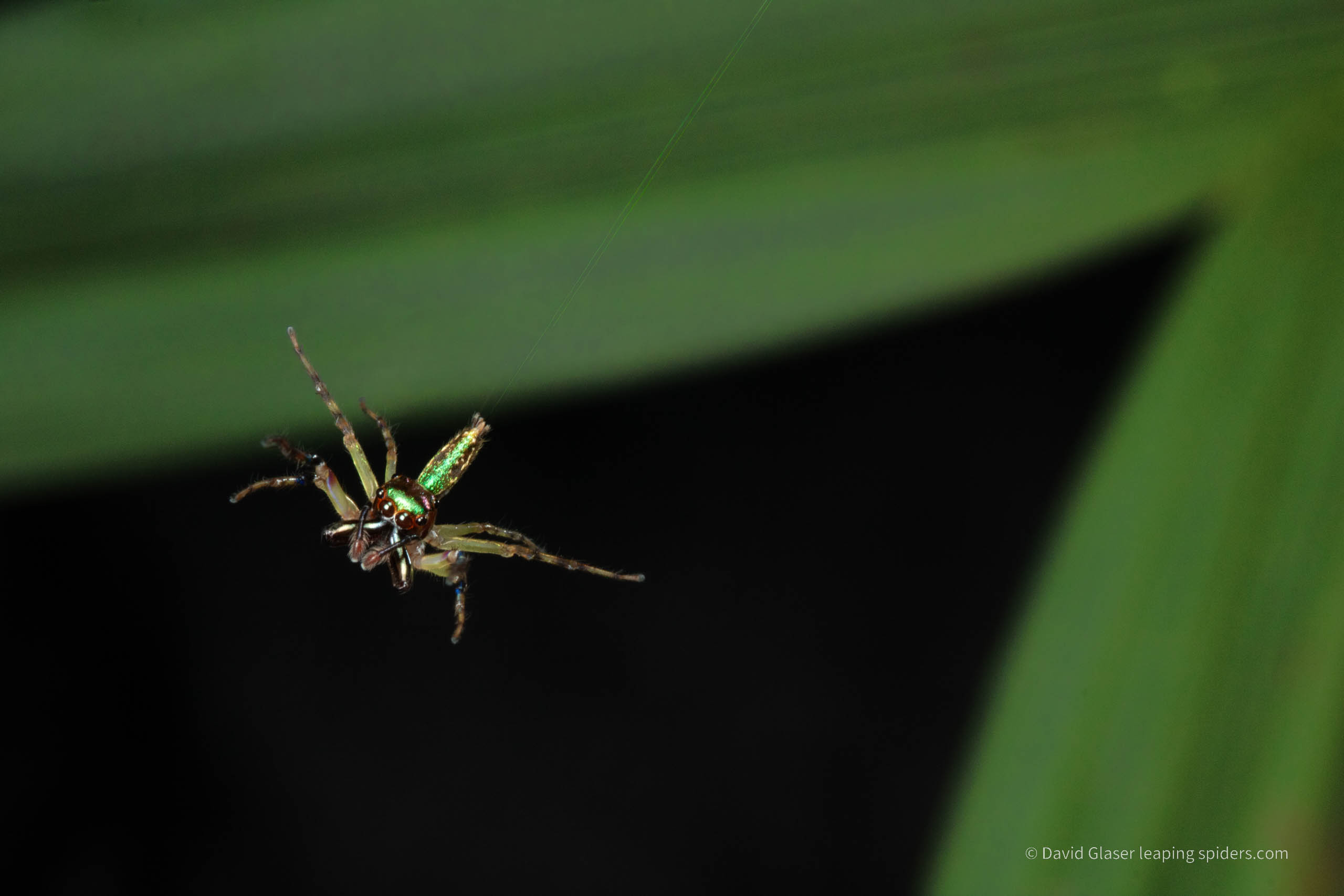
Unidentified Male From Sarapiquí
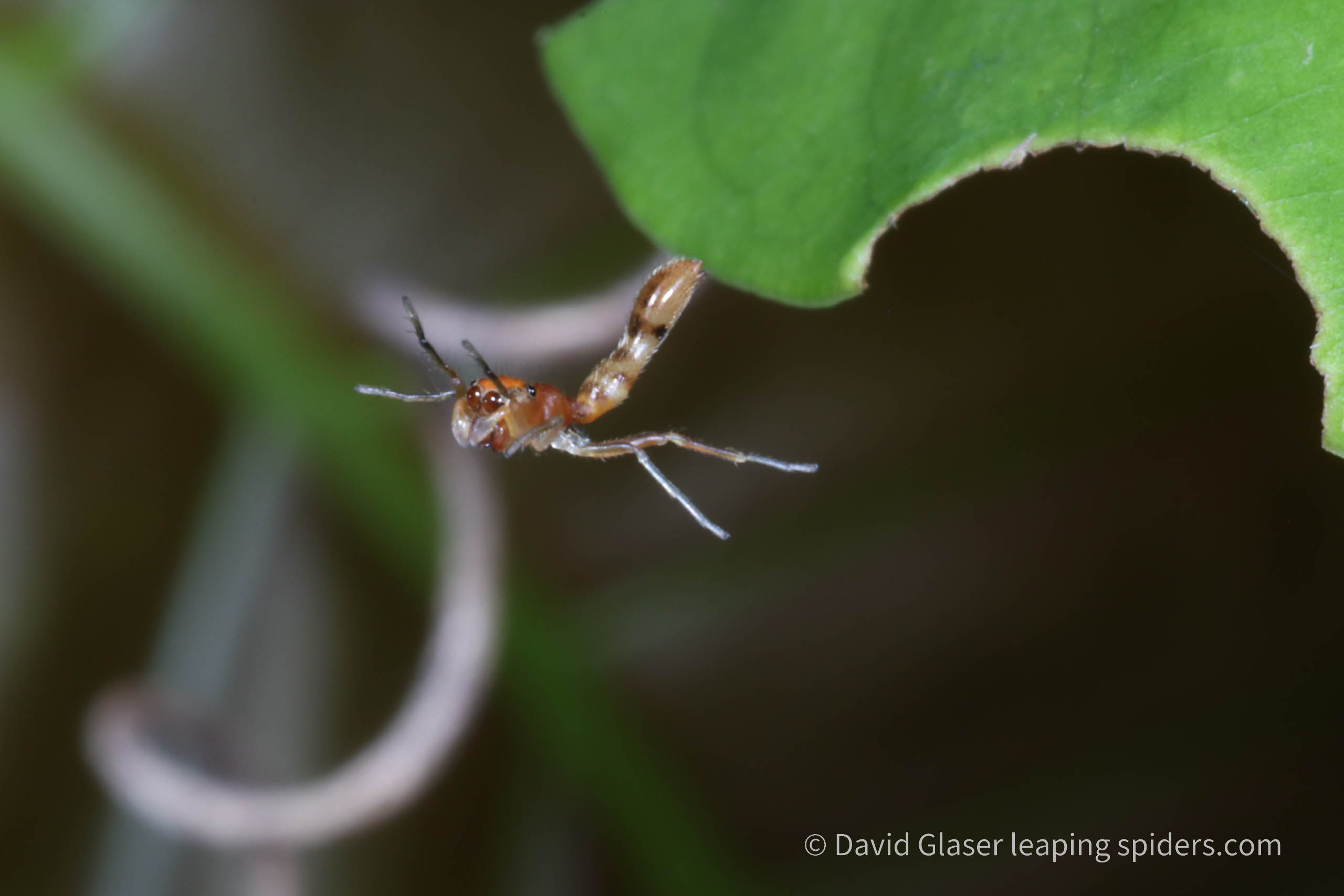
Ant Mimic Genus Synemosyna from Santa Elena (near the Monte Verde cloud forest) – This spider is 5-6 mm long and is practically indistinguishable from an ant in its appearance and the way it moves. The two front legs are held out and waved like an ant’s antennae. Learn more about this type of mimicry here.
Unidentified Species or Genus from San Jose
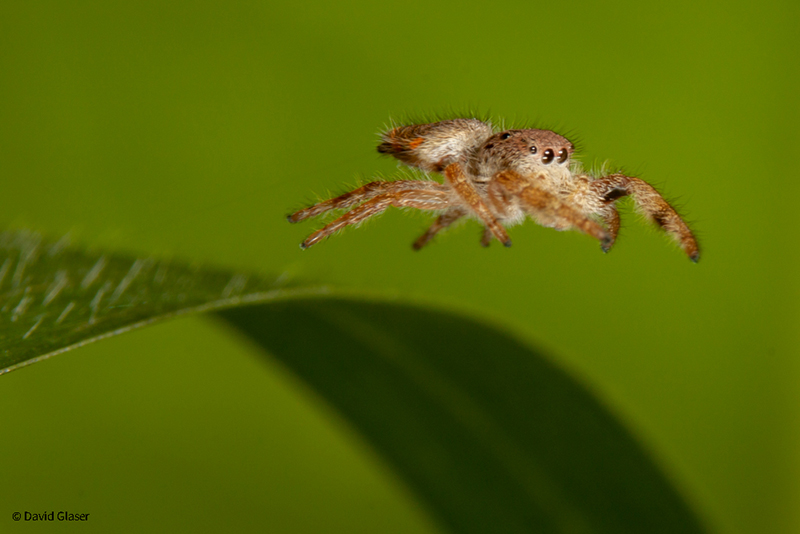
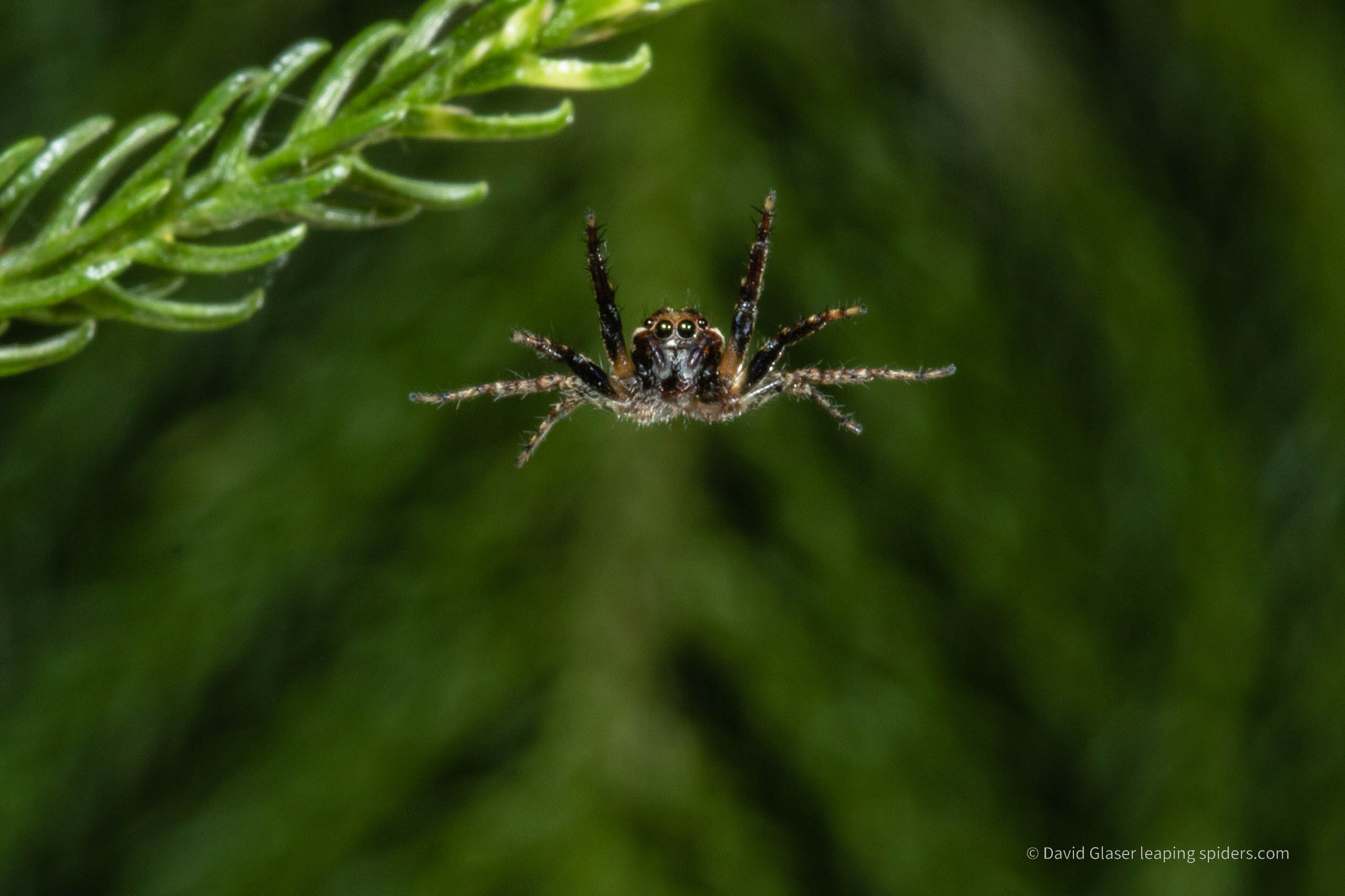
Genus Chapoda
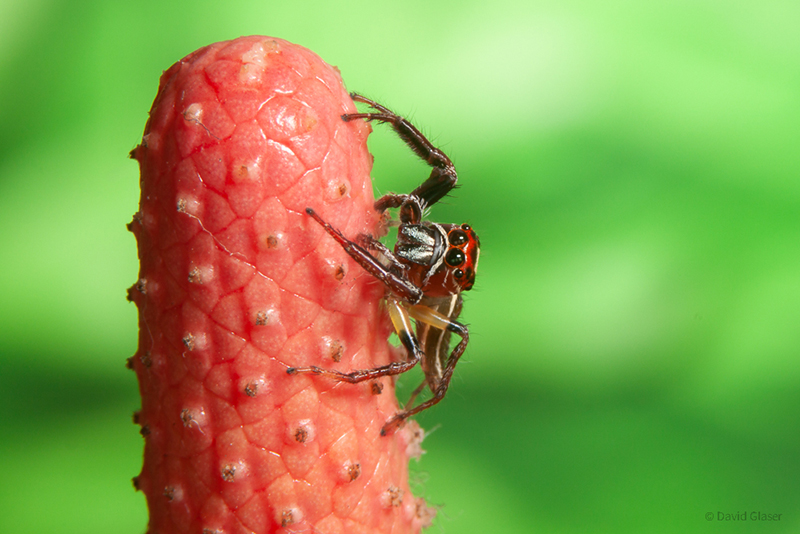
Colonus sylvanus male
This species also occurs in the Southeaster United States
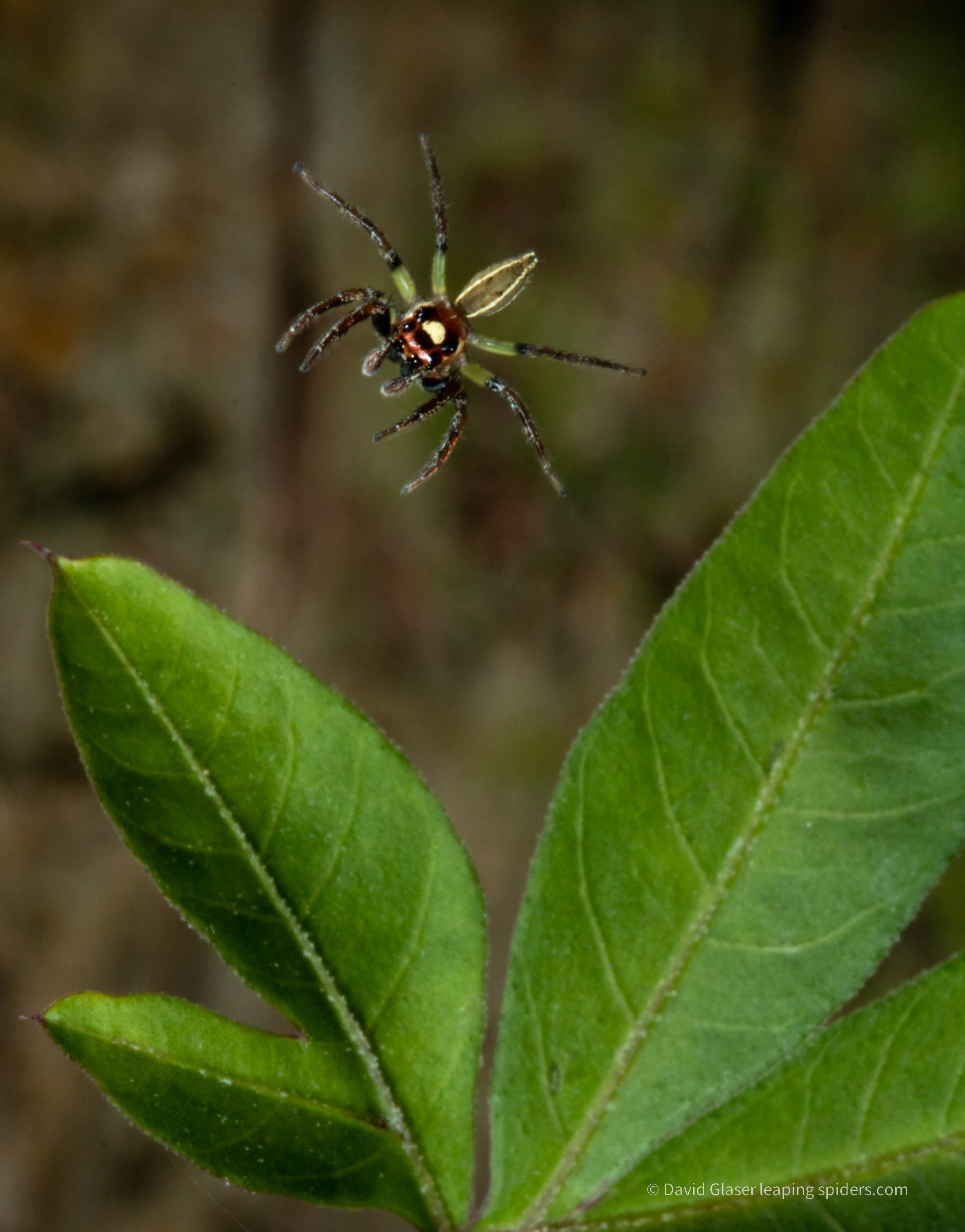
Colonus sylvanus Male
This species also occurs in the Southeaster United States
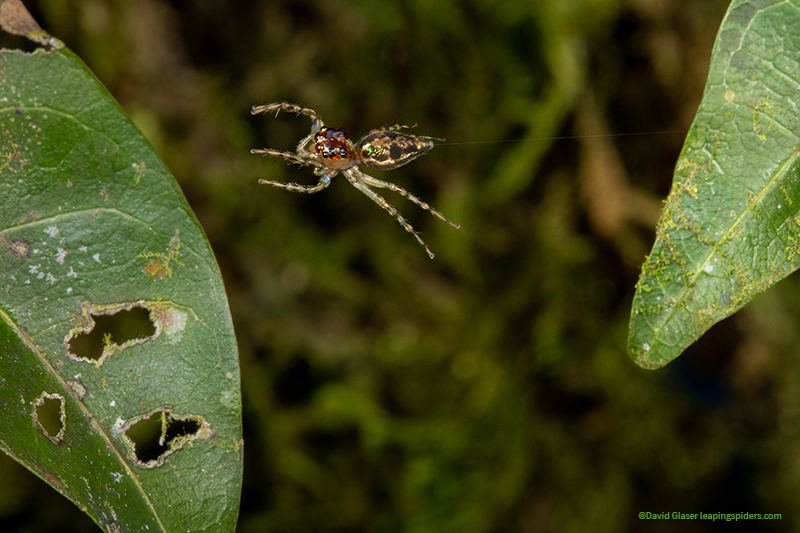
Unidentified Genus/Species, probably a mature femaie
This species also occurs in the Southeaster United States
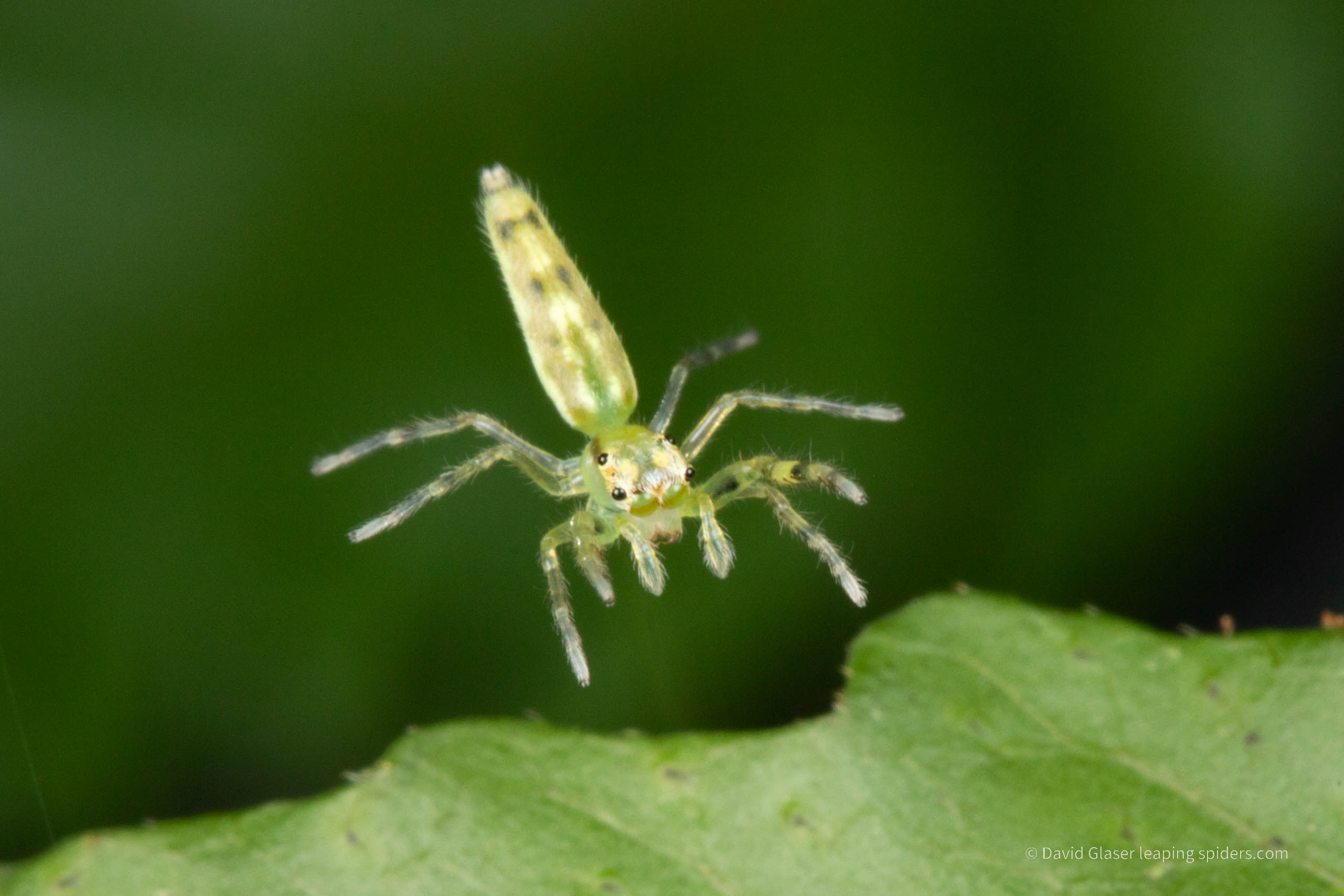
Unidentified Genus/Species
This species also occurs in the Southeaster United States
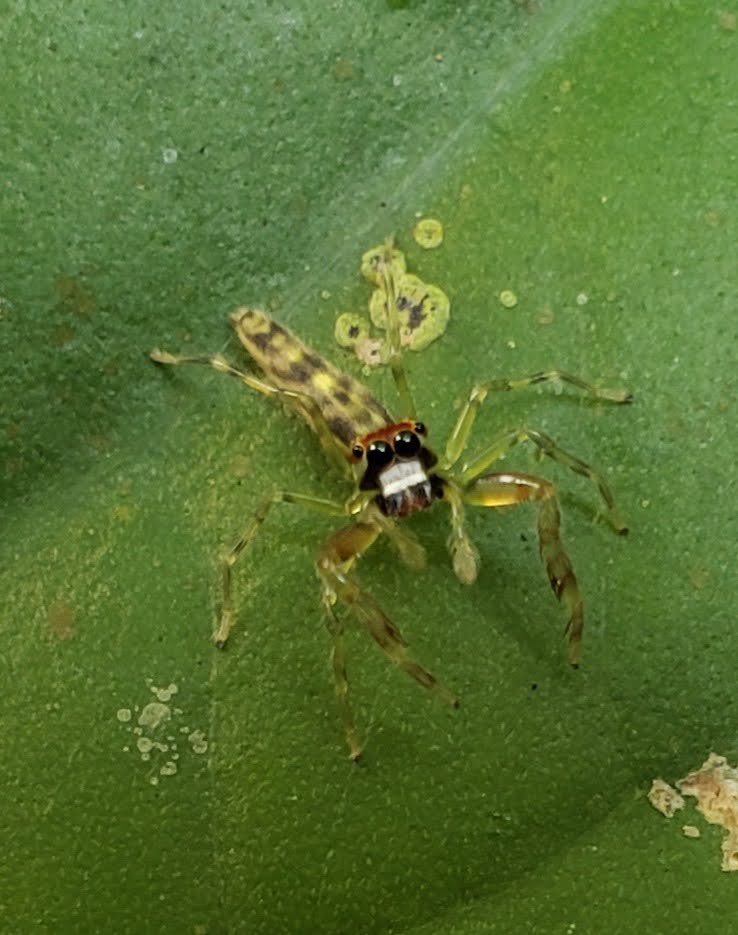
Unidentified Genus/Species
This male may belong to the same species as the photo above. The colors and markings, as well as the thicker front legs, are probably used for courtship and for male-male threat displays.
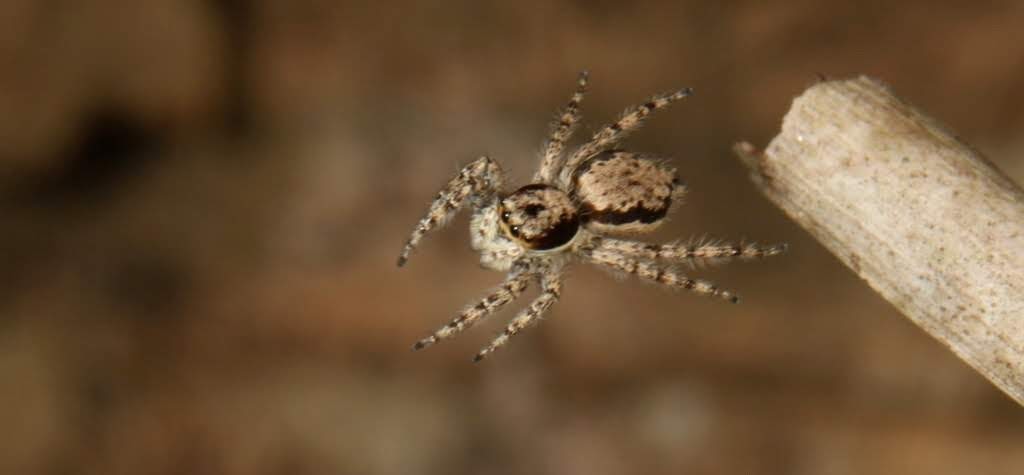
Menemerus bivittatus
is a native of Africa and has been introduced into many other parts of the world. It is very commonly found on the walls of buildings.
Menemerus bivittatus
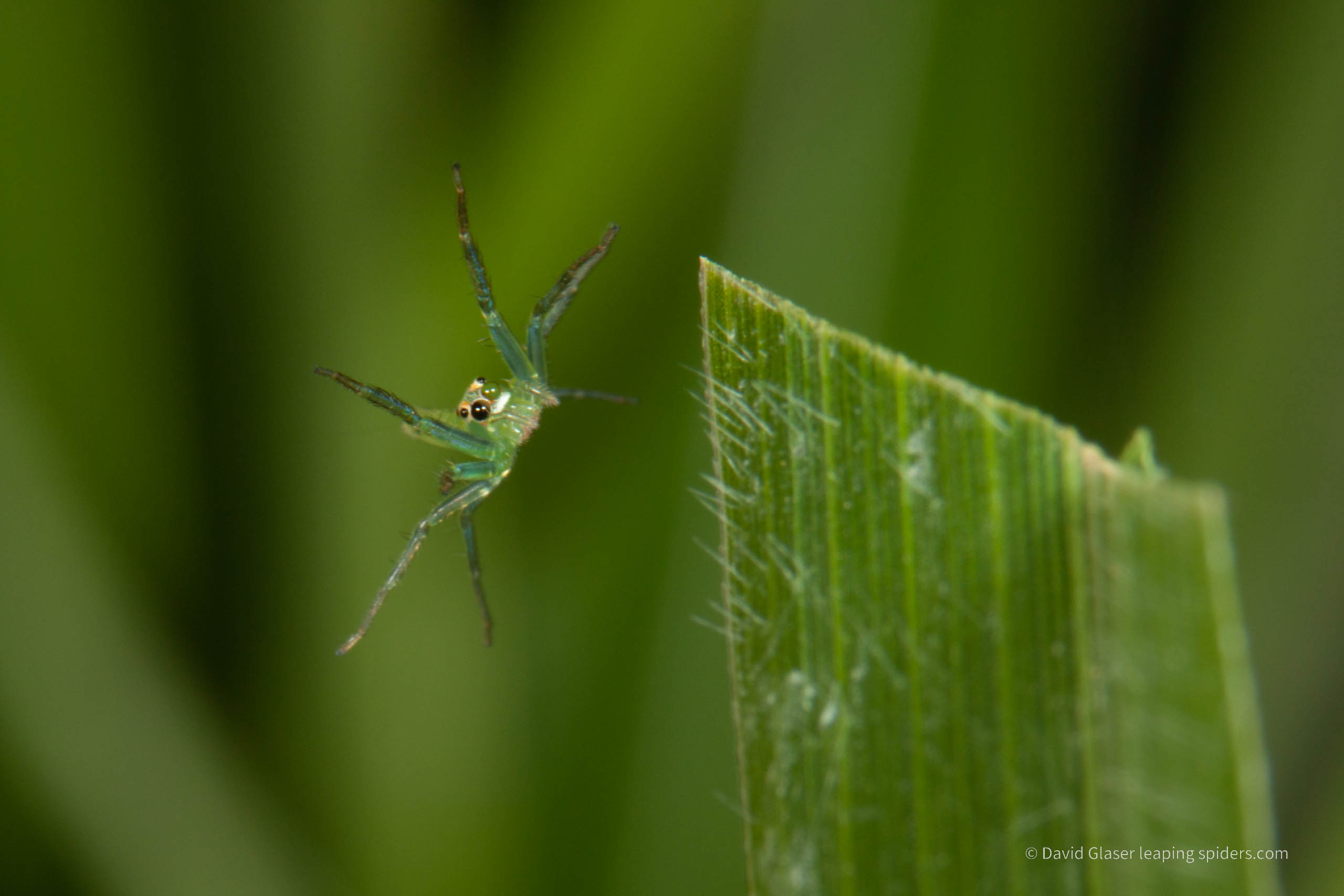
Genus Lyssomanes
Why is one eye black and the other green? Unlike us humans, jumping spiders can’t rotate their eyes, because the lenses are a fixed part of the exoskeleton. However, jumping spiders can scan their visual field, but they do it in a very interesting way. Their retinas can move from side-to-side (see link below). In this photo, the retina of the left right eye is visible and makes the eye black. This video and also this video show the retinas moving.
